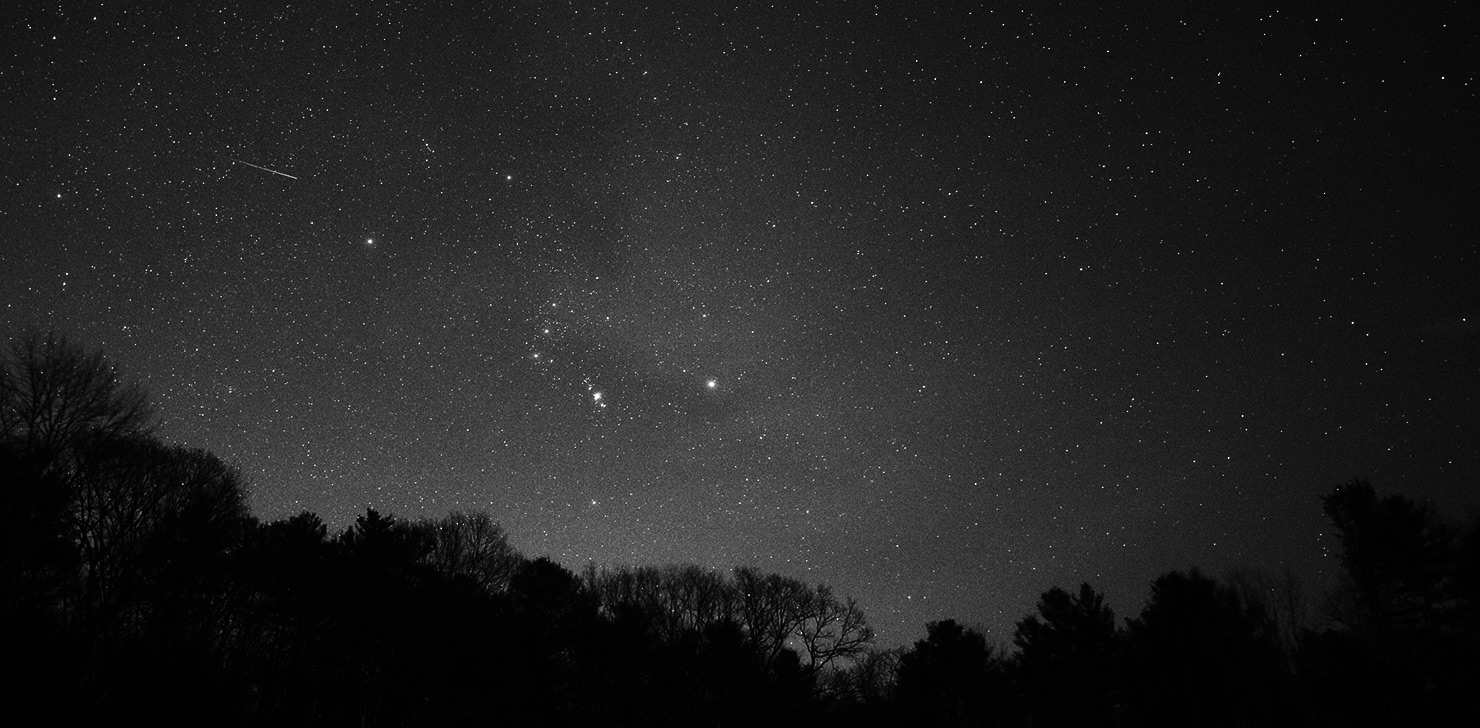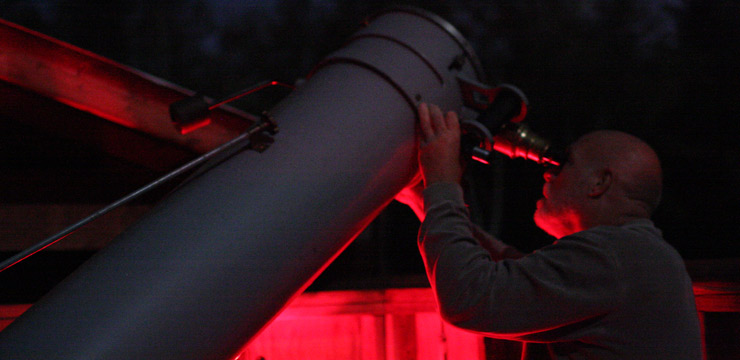
Observing Report: Time For A Late Autumn Shower
January 2022 :
Each year we have an opportunity to take time to observe one of nature’s greatest shows, the Geminid meteor shower. It is named the Geminids because the meteors are observed to radiate from the constellation Gemini. Unlike most meteor showers that are the result of Earth moving through the dust trail of a comet, the Geminids are the result of Earth passing through the dust trail of an asteroid. Yes, asteroid Phaethon is responsible for the substantial number of meteors we see during the Geminids shower. Its orbit it brings it closer to the Sun than any other named asteroid (about one half of Mercury’s perihelion) and may be responsible for its generous dust trail.
This year, the peak occurred in the early morning hours of Tuesday, December 14th. As I scanned the weather reports and considered an early morning viewing for 2021, I thought of last year’s shower. It was predicted to be one of the better recent showings, having to do with the concentration of dust and the direction in which the earth turned into the dust field. I was not disappointed to see about fifty meteors in less than an hour under my moderately light polluted sky and this was not even during the predicted peak!
As the day approached, I resolved to head out that morning. The weather prediction was for a clear sky and a mild 40-degree temperature. A waxing gibbous Moon would be in the sky but low in the west and setting about 2:30am. I set my alarm and lay down for a few Z’s.
At 1am, I got up, dressed, and headed outside. I kept the lights off to preserve my night vision and to not disturb the rest of the family. I quietly set up a zero-gravity chair in the backyard, using the house as a screen for the Moon. As soon as I unfolded the chair and sat down, a bright meteor with a 15-degree trail flashed across Orion. What a great omen! I then reclined to a horizontal position with my feet facing south. The sky was beautifully clear, the temperature mild, and Gemini was high in the southern sky as it crossed the meridian.
As I began to see more meteors, I could not help but admire the various stars and constellations while I waited between the dazzling trails of light. Betelgeuse, Rigel, Sirius, were all shining brightly in the late autumn sky hinting at the winter to come. The meteors were appearing quickly, and my count rose rapidly. Sometimes, I would see 3 or 4 in quick succession in the same part of the sky.
I was fortunate to have some company during my observations. A pair of great horned owls on opposite sides of a field behind my house began calling to each other. One was higher pitched and more urgent, the other, lower pitched and calmer. I could only imagine this as a conversation between an older wiser owl and its eager, younger protege. The elder imparting wisdom of life and nature to the younger. The meteors continued to fall at a high rate, and though most were short, bright streaks, several fireballs with long, lingering trails were observed.
After a little more than an hour and eighty-four meteors later, I folded my chair and walked back into the house with a smile on my face and satisfaction in my heart. Although I was disappointed that none of my family elected to join me (unlike me, they had to work in the morning), there is something to be said for sitting alone under a glorious sky on a pleasant evening and watching the heavens unfold before you with a couple of owls for company. – Michael Corvese
A Geminid meteor from 2017 by Jim Hendrickson
Related Topics




